
Thần Tài – The God Of Wealth
We settled back into our life in Da Nang as quickly as we had fallen out of it. School was back in full swing, Kevin and Diem were back with customers at the salon waiting their turn, and the world seemed just to float on. Such a long time away does, in some sense, give one a chance to adjust to what is routine. Taking that to full advantage, Diem and I fell into this rather pleasant pattern. Getting the girls off to school, a morning walk on the beach, and breakfast thereafter. She would scurry off to open the salon. I would settle down before the computer for a day’s work. In the evening, we would gather everyone from after-school activities and either go out to eat, order in, or, if we have the energy, do a little cooking. It is a good life.
As is usually the case for me, something important catches me off guard, and this time it was Gold. Still not entirely versed in every facet of Vietnamese culture, though I must say I feel that I am becoming a leading authority on the matter, It wasn’t surprising that a quasi-holiday had come up. Which I was, of course, unfamiliar with. I wasn’t entirely sure what the situation was, but it seemed important. And I could tell it was important to Diem. So there seemed no reason not to participate.
Solar or Lunisolar
Before we get into the special days coming up. I think we must first delve, momentarily, into the world of the Vietnamese lunar calendar. Known to the Vietnamese as the Âm Lịch calendar. Much like the Chinese calendar, the calendar is lunisolar, not uniquely lunar. A fact I was unaware of until recently. As the calendars are specifically referred to as lunar in the western world. But what does lunisolar mean?
The style of the calendar does, and to great accuracy, follow the cycles of the moon. The full moon always occurs on the 15th of each month. But the basic cornerstone of the calendar is greatly dependent on solar positioning. So the sun’s position at any given longitude, combined with the moon phases and some ancient arithmetic, gives you the first day of the year, planting and harvesting times, and all the holidays and important periods that go along with thousands of years of a relatively uninterrupted agrarian society. A rather confusing quirk is to maintain the calendar with its rambling nature, leap months, instead of leap days, are added to the calendar on average every three years.
Some interesting quirks
Due to the initial need to base the calendar on an origination point on the globe, the dates would naturally change depending on your location. The moon’s phases are not the same across the planet simultaneously. Very close, to be sure, but enough of a difference that a few degrees of longitude can sometimes cause calendars to vary by months. As was the case in a still divided Vietnam during the year 1968. Hanoi and Saigon celebrated the new year a day apart.
This strange quirk of solar position, lunar phasing, and longitudinal genesis of the East Asian lunisolar calendars has caused China to adopt one time zone. The calendar is determined by the position of the sun and moon phases as it relates to Beijing. If it’s 7 am in Beijing, it’s 7 am 2500 miles away on the western border.
Âm Lịch Calendar
The 10th day of the Lunar Calendar marks a special day for all the Asian nations that culturally use the lunar calendar to establish a tradition in the subtle backgrounds of their lives. The lunar calendar is used by the average Vietnamese to live. And it’s interesting when Diem and I discuss calendars as we often have to convert weight and measures and time in space. And not in hours and minutes, but more in days of the year.
The Vietnamese calendar is like most things Vietnamese, pragmatic and extremely functional. The Lunar months are only numbered, and the numbered days gives one a simple date. The fourteenth day of the first month. Or, in an even more specific yet equally confusing case, the fourteenth day of the first month could also be written as the seventh day of the second week of the first month. Which to the western world was February 26th in 2021. Neither in the first month nor the second week of the Gregorian calendar. I know, it’s a bit of a head spinner.
God of Wealth Day
So it would come that on or about the 8th day of the first month of the Vietnamese calendar (for those Gregorophiles, the 19th of February), Diem started dropping a few hints. I knew something was up. I frantically began researching what could possibly be on the horizon. The few hints that I had involved gold. And advertisers had begun putting their stamp on the oncoming gold rush in the surrounding days. Then I hit a bit of good fortune when the Vietnamese English language paper dropped an article about the city’s gold shops preparing for the onslaught of gold that would undoubtedly be consumed by the masses on the 10th day of the first month (February 21).
I did my typical bought of relentless research to determine what this annual day of gold was and what it was all about. An exploited, extorted, and highly commercialized representation of a traditional Buddhist belief. On the God of wealth day, many in Buddhist-dominated countries believe that purchasing gold will sway favor of the god of wealth. And he will bring good fortune to your home in the coming year. The first thing I thought was, sounds expensive, and then some interesting parallels came to mind. Many will buy rings and other jewelry for their wives and girlfriends, and I just thought it interesting to land so close each year to Valentine’s day.
Fulfilling Tradition
I’m not one to break tradition. I could tell Diem was getting rather excited at the prospect of purchasing some gold for the new year. So with a minimal protest on my part, I’m a sucker for putting a smile on Diem’s face, we headed to Ông Ích Khiêm. Ông Ích Khiêm is a street that borders both the Big C mall, and the traditional Con market downtown. Like most things Vietnamese, you will find many of the gold shops clumped together. I have never fully understood this idea, at least not from an American business competition perspective . But from a shoppers perspective, it’s quite convenient. If you need a chair or a table, go to the street where all the merchants are selling tables and chairs, it’s great. And so here we were headed to the de-facto gold street of Da Nang.

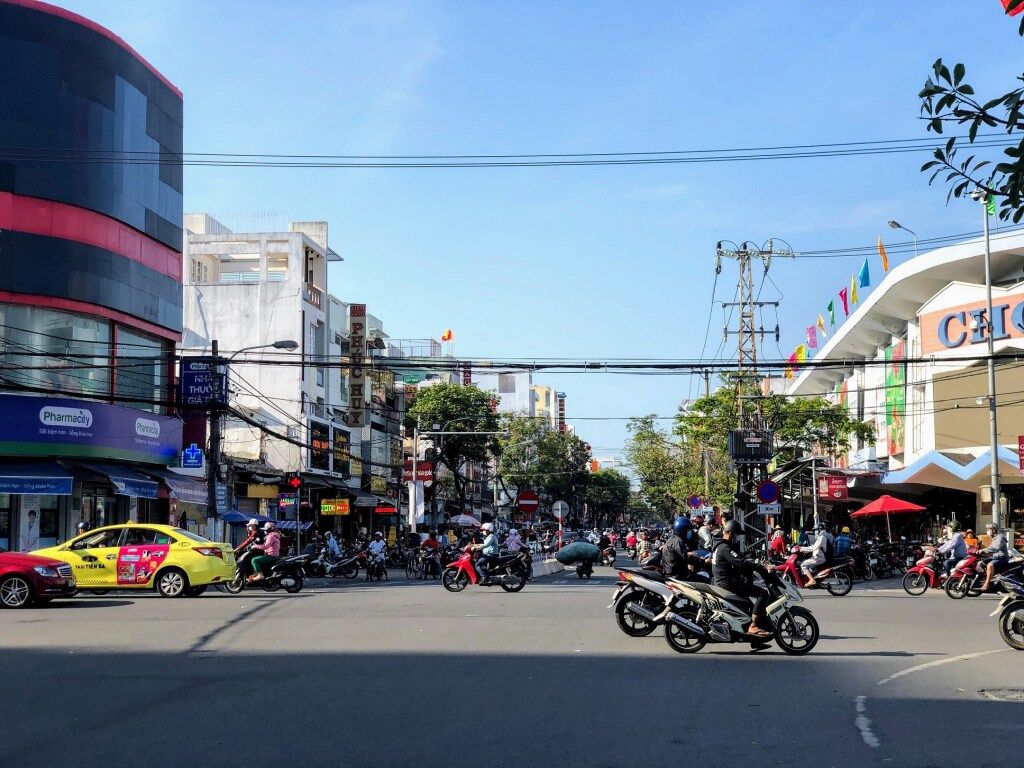
The gold shops were lined with patrons, and the restaurants and street vendors filling the gaps were abuzz with activity. The entire city, it seemed, had come to buy gold. I read many interesting articles about the gold shops procuring golden buffalo jewelry, limited edition gold leaf stamps, and other collectibles. Some shops in Ho Chi Minh were even advertising gold bars stamped with the years unmovable and steady mascot, the buffalo. The animals of the Vietnamese zodiac are only part of the equation. There are 12 animals, but ten forms. The forms are dual forms of the five elements of oriental tradition. Water, fire, wood, metal, and earth. This year was the year of the wrought metal buffalo. Or tân sửu. With wrought metal being metal forged in creation, with skill and artistry, it was no surprise that buffalo jewelry was trendy this year.
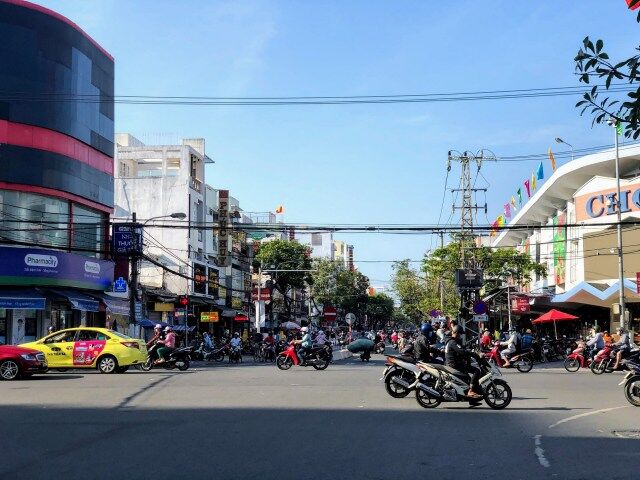

Ripples from Asia
The practice, as I’ve said, is not unique to Vietnam. It is a practice celebrated in most Asian cultures that have a lunisolar calendar and Buddhist roots. China, Malaysia, and Singapore are among the other nations participating. So many people purchase gold around this time globally that it has been known to affect global gold prices. It definitely affects regional gold prices. On the actual day gold was trading in Vietnam at almost 400 dollars more an ounce than the average global price. It’s a lot of movement. It’s a lot of gold.
What to Choose
Diem began browsing the gold jewelry and I went for my usual spot in the gold shops. The American high school and college class rings. I haven’t seen a shop yet that didn’t have them, and they always captivate me. Rings from every state and territory can be found all across Vietnam awaiting to be purchased. I often see affluent businessmen, bank managers, and business owners, sporting one on a finger. But I digress, I’ve already told that story.
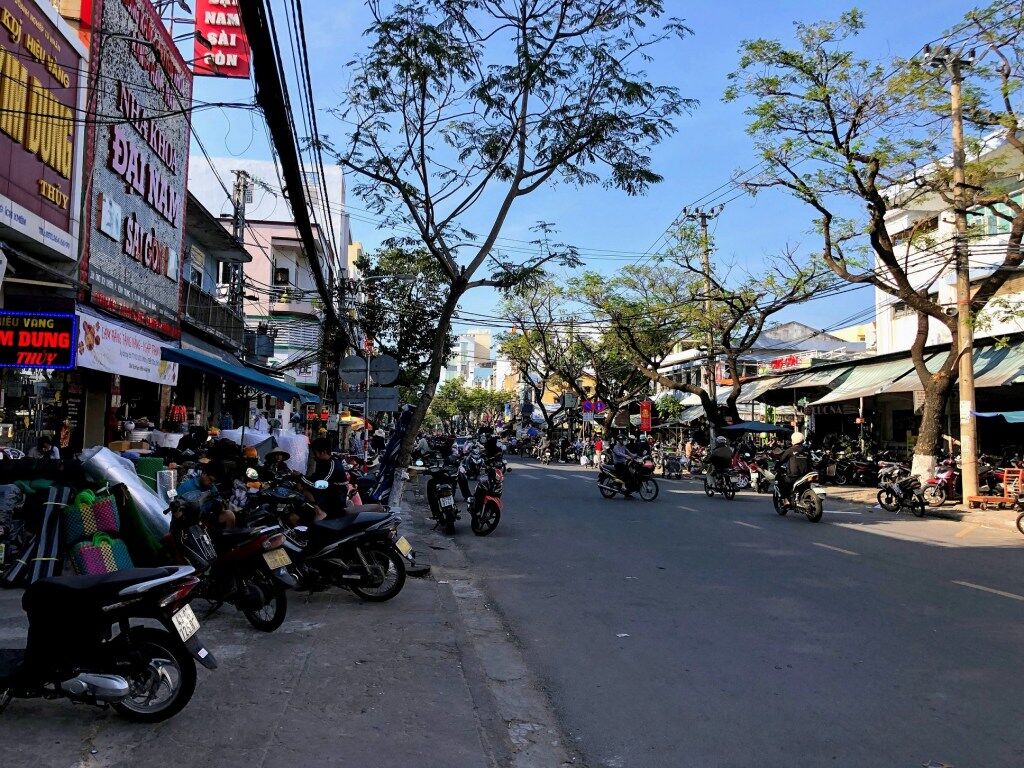
Diem picked a few options, and asked my opinion. I knew without hesitation which one I would choose. Some had hearts, some letters, but one had a tiara. it was perfect. A ring fit for a queen. The shop calculated the price, all gold is weighed and sold by market valuation. A practice I always thought to be a bit tedious. But I guess in reality it is a wash. So if you ever want to buy gold jewelry in Vietnam, always go when the price is down. You’ll get a better deal.
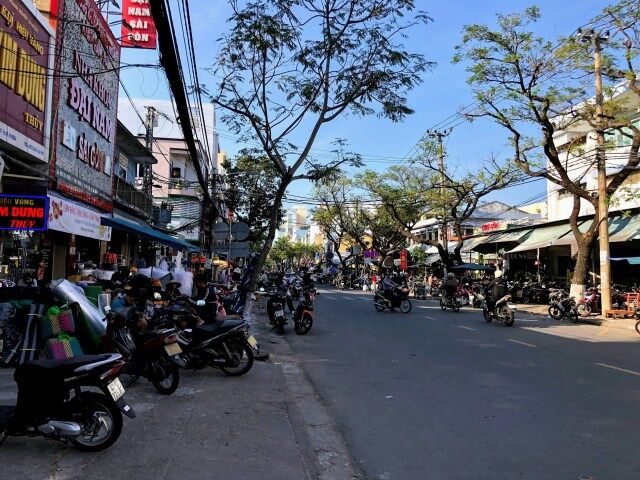

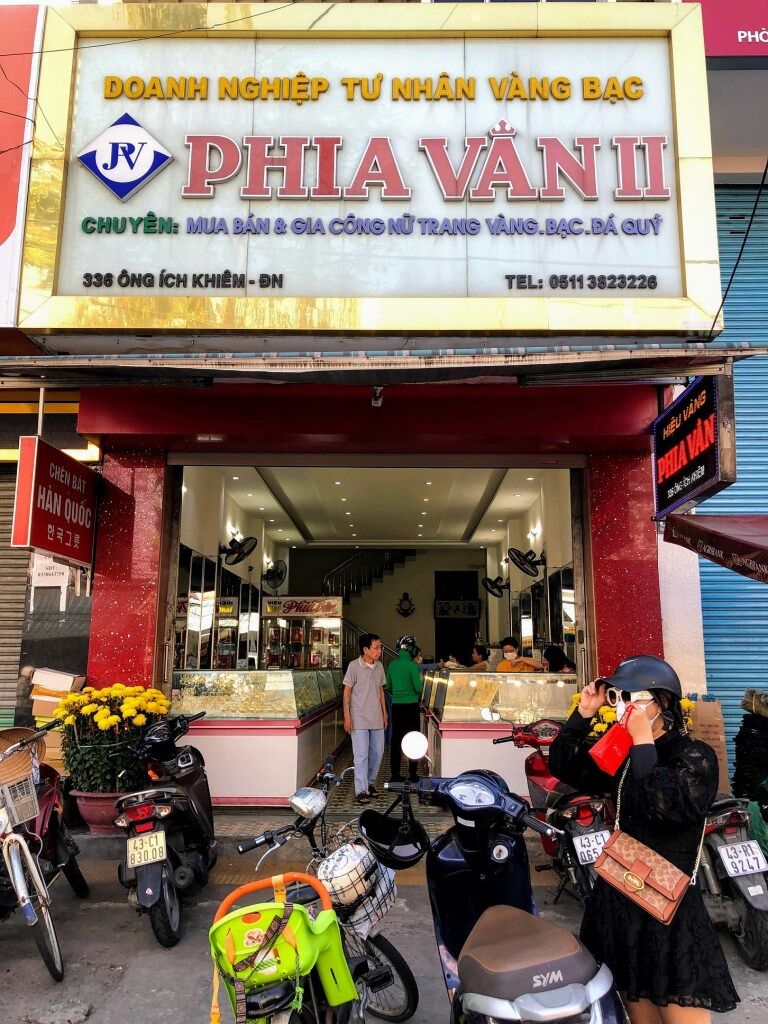
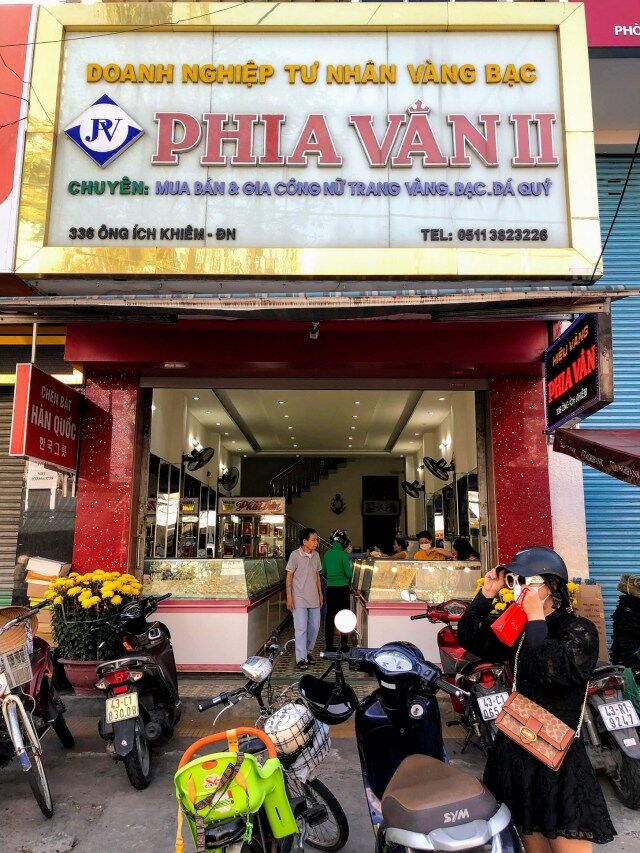

Ngon Thị Hoa
We picked the girls up from school and headed out for dinner. One of our favorite spots that’s walking distance from the house. Ngon Thị Hoa, which translates to delicious market, is a beautiful outdoor restaurant serving some delicious traditional Vietnamese fare. Decorated to resemble the pre-war French colonial period, one can’t help but imagine sweaty Frenchmen in white linen suits sitting at the bar sipping cognac or burgundy as you walk through the period setting. We settled in for a meal of my quang, banh xeo, buns and the girls loaded up on spaghetti. We always enjoy the atmosphere and the setting of one of our favorite neighborhood spots.
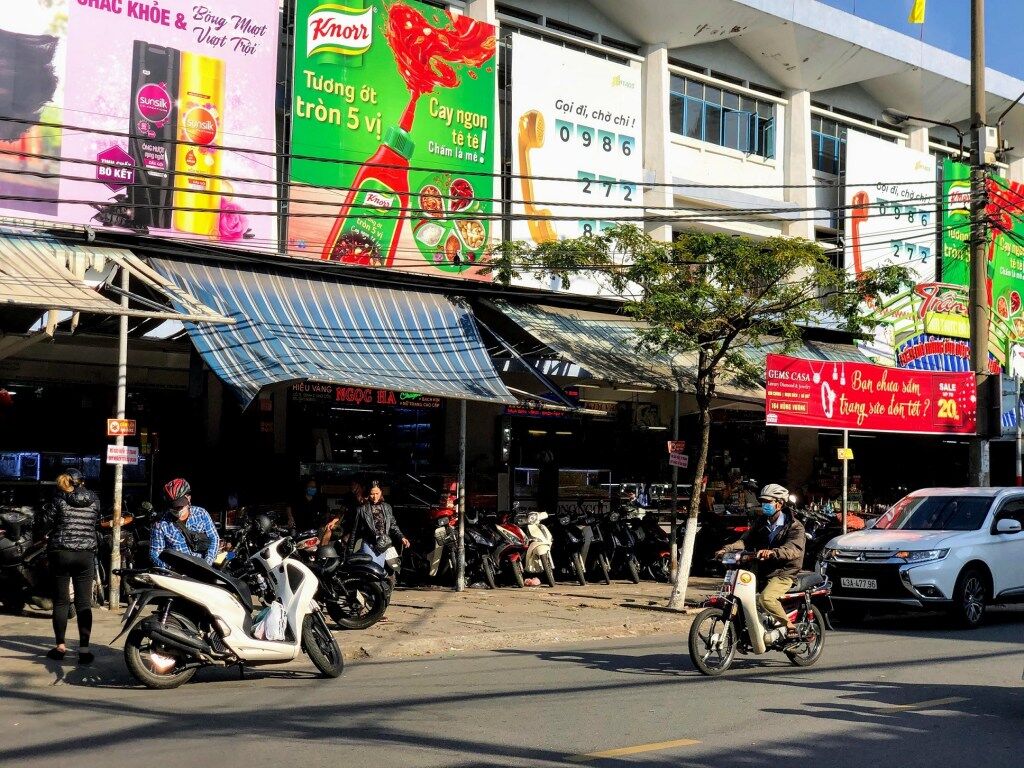
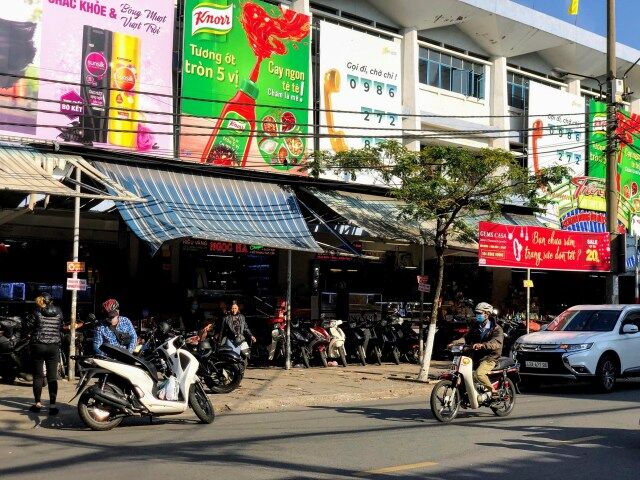

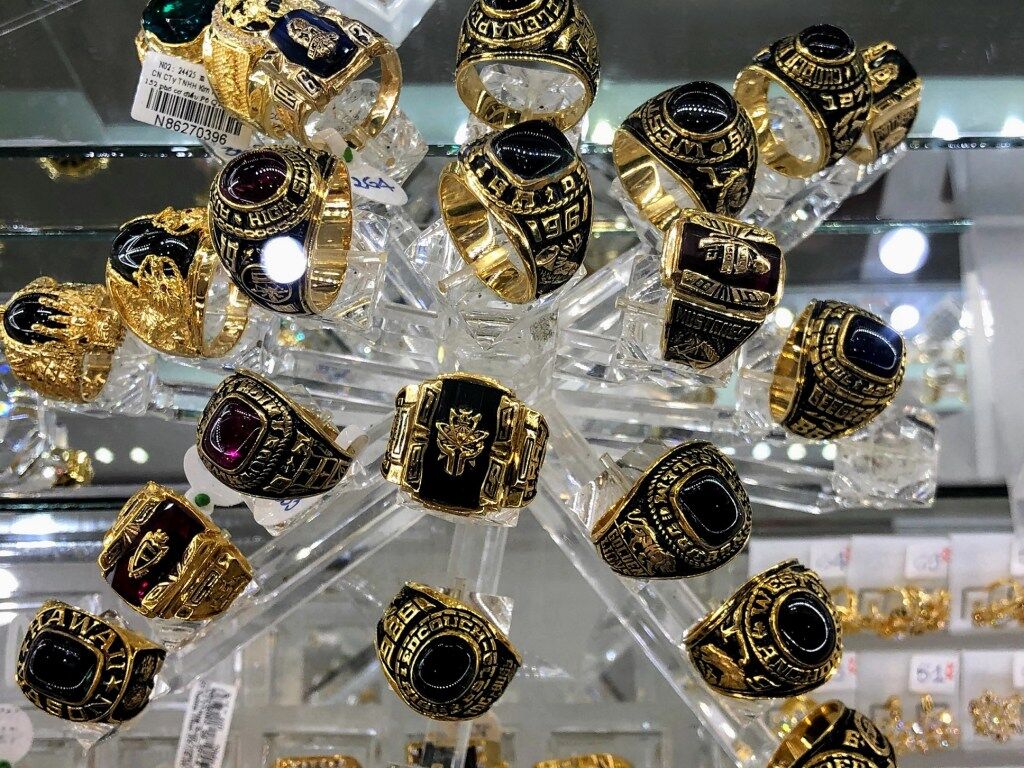
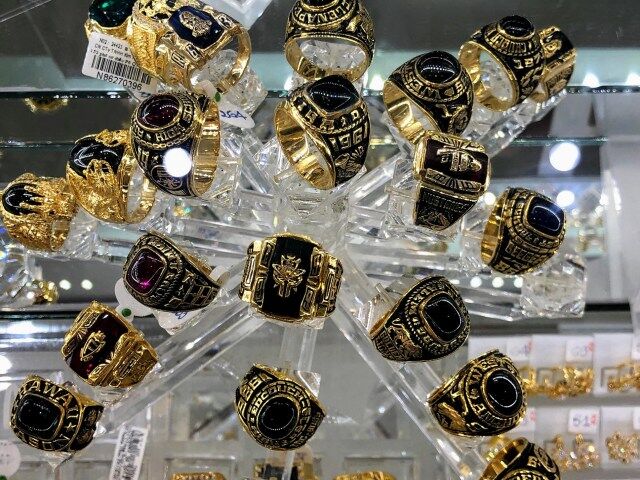
Another special occasion was just over the horizon and something I was looking forward to. Tết Nguyên Tiêu was coming in only a few days. February 26th to be exact. Or as they would say in Vietnam the 15th day of the first lunar month. It would mark the first full moon of the year. A great time of festival in Vietnam. It would mark the official lunar beginning of spring, the coming of the harvest, and the abundance it brings. We would head to Hoi An for the festival of lanterns to commemorate the event. The ancient trading town would once again fill with lantern light and throngs of people walking its canals and rivers. And so too would we. But that my friends, is a story for another post.
Click Here for more holiday posts.
Click here for an article about the holiday in Vietnam.
Link nội dung: https://wordplay.edu.vn/ong-than-tai-a74794.html